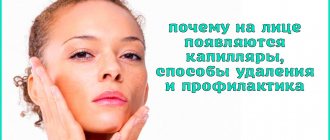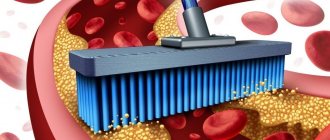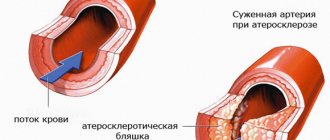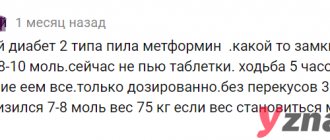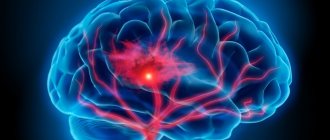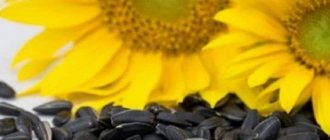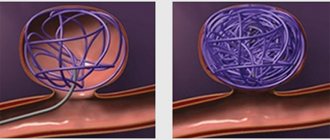Vegetative-vascular dystonia, which reduces vascular tone and brings a lot of suffering to patients, has a semi-official status in Russia, and in some countries it is not even considered a disease. But it leads to narrowing and spasms of the blood vessels in the brain, which causes headaches, dizziness and other unpleasant symptoms. Dystonia can be caused by stress, emotional stress, weather changes, and chronic diseases of the spinal column.
To treat dystonia and vascular spasms, vitamins, adaptogens and physiotherapy are usually used. Gymnastics for blood vessels will help effectively complement traditional treatment and improve the health of the body.
Nishi Method
For the brain to work effectively, it needs oxygen. If blood circulation is impaired, the brain experiences oxygen starvation and, consequently, becomes unable to perform normal activities.
The Nishi technique will help strengthen blood vessels, improve blood circulation and provide oxygen to the brain.
The easiest and at the same time effective way is vibration exercise. They do it only after waking up, without getting out of bed. It is necessary to raise your arms and legs and shake them vigorously for several minutes. Warm-up will vibrate the capillaries and remove toxic substances and waste from the body, and also activate the nerves that stimulate the brain.
Nishi's technique also includes an exercise called the Goldfish. Do it while lying down, placing your hands behind your neck. Point your toes towards you and, tensed, produce vibrating movements of the entire body. Exercise activates blood movement and tones blood vessels.
Capillary training is a prerequisite for improving the vascular system
The smallest blood vessels are capillaries. They are responsible for the life of every cell of the body, delivering nutrients to it and freeing it from decay products. Capillaries permeate the entire human body, their total “length” is at least 60 thousand kilometers. If an obstacle is encountered in the path of blood flow in the form of an extremely narrowed vessel, then in the nearest cells there will be an accumulation of toxic decay products that will not be eliminated in a timely manner. This will lead to disease not only in the cardiovascular system, but also in other vital organs.
The Japanese scientist and healer Katsuzo Nishi called blood the “river of life” and created an entire system for healing the body through training capillaries and exercises to strengthen blood vessels:
- The simplest but most effective technique that can improve the condition of capillaries and blood circulation is vibration exercise. You need to do it in the morning, without getting out of bed. Raising your legs and arms up, you should simply shake them finely and frequently for 1.5 - 2 minutes. In addition to a kind of vibration massage of the capillaries, there is also a redistribution of lymphatic fluid, which helps cleanse the body of toxins and waste.
- Another exercise from Nisha’s arsenal is “Golden Fish”. Lying on a flat bed, you need to put your hands under your neck at the level of the fourth cervical vertebra, pull your toes towards you, and, straining very hard, reproduce small vibrating movements with your whole body, like a fish. This exercise helps get rid of excessive tone of the nerves located in the spine and promotes active blood circulation.
You need to train capillary vessels regularly, repeating the exercises twice a day - in the morning, after waking up, and in the evening.
Video: a set of exercises according to the Nishi system
Dancing and yoga are an ideal remedy for blood vessels
Dancing and yoga have an excellent effect on blood vessels, during which they train coordination of movements, enrich the blood with oxygen, improve blood circulation, increase the elasticity and tone of blood vessels. In addition, they help to get rid of psycho-emotional tension and stress, which is important for the health of blood vessels.
The following exercises will provide effective results in the treatment of vegetative-vascular dystonia:
- Taking a slow breath through your nose, you need to rise on your toes as much as possible and hold your breath. Returning to the starting position, you should relax and exhale slowly through your mouth. Do 10-15 repetitions.
- Taking a quick breath through your nose, throw your arms out to the sides, bending backwards. In this position, you need to hold your breath for 3 seconds. Then, after exhaling, lower your arms and relax your muscles. Repeat 7-10 times.
Dancing is an ideal way to strengthen blood vessels.
How to train the heart and blood vessels?
In order to keep the blood vessels and heart in good condition for a long time, you need to pay maximum attention to their regular training. This is especially true for older people who, due to age, have reduced physical activity. A sufficient amount of oxygen and feasible physical exercise - this should not be forgotten by older people.
Training the heart and blood vessels should begin in the morning, immediately after waking up. Rotating your hands and feet is an exercise that will make your blood flow “wake up” and the blood vessels will dilate. Bends, squats and turns of the body must be performed while constantly monitoring the heart rate. If the pulse of an untrained person is within 90-100 beats per minute, then his heart still does not receive enough oxygen and blood. As the degree of general physical fitness increases, the heart rate also increases. Accordingly, the heart works more efficiently and receives a sufficient amount of blood due to the good functioning of the aorta.
Several exercises for the heart and blood vessels
- Rise on your toes and walk with your knees raised very high.
- The legs are at shoulder width. Hands rise upward, clasping hands together. When the body tilts to the right, the right leg is moved to the right. Try to perform the tilt as deeply as possible. Repeat the same movements to the left side. Perform 8-9 times, remembering to control your breathing.
- Extend your arms to the sides and rhythmically clap your palms on the opposite shoulder. Right hand - left shoulder, and vice versa. Keep your body straight. Increase repetitions and tempo in the absence of unpleasant sensations in the heart area up to 50 times.
- Place your arms along your body, legs pressed tightly against each other. Make a full circle with your hands: back - up - forward. First carry out the rotation cycle in one direction, then change the direction to the opposite. Repetitions – from 10 to 50.
- Lying on your back, you need to raise your knees bent at an angle of 90° and imitate the movements of riding a bicycle. Do not hold your breath.
- While in a lying position, raise your outstretched legs to a height of 30-40 cm and make cross-shaped movements. Repeat 20-25 times.
Swimming, cycling, cardio exercises, and walking up the stairs help to actively train your heart. Just one thing should not be forgotten: the load should increase gradually. The main thing when doing exercises is not their quantity and intensity, but regularity. A strict cycle must be observed: load and relaxation. Then the muscle fibers of the heart will increase, the heart muscle and blood vessels will strengthen, and the benefits of training will become obvious.
Video: exercises to improve the cardiovascular system through muscles
Gymnastics for brain vessels
To reduce the risk of spasms, it is necessary to include exercises to strengthen blood vessels into the exercise routine. Moving the head in different directions, rotating the body, standing on the head, elbows and shoulder blades, lifting the legs in a lying position, as well as somersaults and circular rotations are effective.
Standing on one leg, as well as on two, will help activate cerebral circulation. Walking will improve blood circulation, increase vascular tone and provide the brain with oxygen. Exercise dilates arteries and increases blood flow to the brain.
The following exercises will help expand the arteries and improve blood flow in the brain:
- Rotate your head first clockwise and then in the opposite direction for 2-3 minutes.
- Raising your hands up, you need to make a “lock”. Bend forward, simulating chopping wood. Repeat 8 times.
- Take turns swinging your legs: the leg should move towards the opposite hand.
- Bend your knees slightly and spread your arms to the sides, make asynchronous movements: make rotational movements back with your right hand, and forward with your left and vice versa. Exercise will help improve memory, attention and concentration, as well as increase the speed of thinking.
- Perform straight leg raises, using your hands to support your lower back. At the end, stay in the “Berezki” stance for 5 minutes.
To perform the first 4 exercises, you need to stand with your feet shoulder-width apart. The fifth exercise is done lying on your back with your arms extended along your body.
Bends of the torso have an effective effect on the blood vessels of the brain.
Strengthening blood vessels and heart
It is very beneficial for the heart and blood vessels to ride a bicycle, swim, walk up the stairs, and perform cardio exercises. The simplest and most effective among them are:
- Walking on your toes, raising your knees high.
- Simulation of cycling while lying on your back.
- Exercise “scissors” with legs, also lying on your back.
It should be borne in mind that if cardiac and vascular activity is weakened, the body should not be overloaded with grueling activities.
The main thing is to regularly perform exercises with strict cyclicity: the load should always be followed by relaxation. This helps to increase the muscle fibers of the heart and strengthen blood vessels.
Gymnastics for blood vessels is one of the best methods to strengthen them and prevent dystonia. This disease is a decrease in vascular tone and slowing of blood circulation. It can develop at any age due to genetic pathologies, bad habits and other factors. If you devote time to simple exercises every day, you can strengthen vascular walls, restore heart function, and prevent heart attacks and strokes.
Gymnastics for neck vessels
The neck is important for maintaining the functioning of the brain, because arteries pass through it, supplying oxygen and nutrients to the brain.
If the neck muscles are weakened, then the person has to strain to support the head in a normal position. Due to constant tension, blood vessels are compressed and nerve endings are pinched, which leads to headaches, dizziness, poor circulation, hypertension and other troubles.
To get rid of problems, it is necessary to strengthen the muscles and blood vessels of the neck. For this purpose, it is recommended to perform bends, turns and rotations of the head, but the movements should be smooth.
Complex for strengthening cervical vessels:
- Press all parts of your back against the wall. After inhaling, you need to “imprint” into the wall as much as possible, straining your neck muscles. Holding your breath, remain in this position for 5-6 seconds.
- Sit on a chair and place your palm on your forehead. Then press firmly with your hand on your head, tilting it back. At the same time, by tensing the neck muscles, prevent the head from tilting. Maintain neck tension for 5-10 seconds while holding your breath. Then exhale and rest for 10-15 seconds. Repeat 3-7 times.
- Perform exercises similar to the previous one, tilting your head forward and then to the sides.
- Perform slow rotational movements with your head in one direction and the other. Repeat 8-12 times.
Strengthening brain vessels and improving thinking
Recovery after a heart attack or stroke
After damage to the heart muscle, a long period of rehabilitation is required. A prerequisite is exercise therapy - physical therapy, which is prescribed by a specialist. These will be smooth bends and turns of the body, walking in place and long walks. If you do not pay attention to physical activity, the heart muscle will not receive enough oxygen and nutrients for full recovery.
IMPORTANT! After myocardial damage, the intensity of exercise should be monitored. During gymnastics, the pulse should remain within 120 beats per minute.
Exercises for the heart and blood vessels are a mandatory way to prevent many diseases. Without physical activity, blood volume decreases, arteries and veins lose elasticity, and movement through the capillaries slows down. It is important to take care of the condition of the cardiovascular system as early as possible so that they remain healthy in old age.
Brain vascular training can grow more blood vessels, but why do it?
Imagine that the blood vessels in your brain are the streets of a growing and changing city. Blood vessels are responsible for moving essential nutrients to brain cells and removing unwanted toxins and waste.
In the city, many cars move along the streets (arteries), and small streets (capillaries) are able to penetrate deep into the neighborhoods.
The arteries and capillaries in the streets of the brain must make sure that blood flows to the brain cells in every nook and cranny.
How to strengthen the blood vessels of the lower extremities
Nature has endowed us with vertical walking. At the same time, we pay with such problems as varicose veins and other lesions of the veins of the lower extremities. And strengthening this type of blood vessels is best done through movement and various water procedures.
At the same time, the following simple loads should also be performed:
- Position, legs wider than shoulders, begin bending towards the floor, while your legs should be straight and your hands should touch the surface.
- Sit on the floor, spread your legs as far as possible, cross your arms over your chest, and try to reach the floor with your hands. It is important that your legs are straight.
- Get on your knees. Spread your arms and start walking back and forth.
See also on the blog: Taoist Kneeling Walking
Light jogging is also recommended, but you don’t need to do everything with maximum fanaticism. In this case, everything needs to be skillfully regulated and alternated. This is the only way to achieve maximum effect.
These exercises from the Phoenix healing complex are very effective for strengthening the walls of blood vessels, improving their elasticity, for improving blood and lymph flows, for stagnation of venous blood, for thickening of blood, for varicose veins, lymphadenitis, thrombophlebitis.
Pharmacy drugs
Discirculatory encephalopathy is diffuse or multifocal damage to brain tissue resulting from vascular pathologies. The disease in its early stages is treatable. Medications that will help strengthen the blood vessels in the brain are developed for the prevention and treatment of vascular pathologies.
Antihypertensive drugs are prescribed at a minimum dose to reduce the risk of side effects. If blood pressure does not decrease enough, the dose is gradually increased. For maximum therapeutic effect, combinations of drugs are used. Principles of wall strengthening therapy:
- Therapy with antiplatelet agents - substances that prevent the formation of blood clots.
- Statin therapy for elevated blood cholesterol levels.
- Limiting table salt consumption. No more than 5 g (half a teaspoon) daily.
- Reducing the amount of animal fat in the diet.
Consequences and complications of vascular spasms
When vasoconstriction occurs, a person feels:
- severe pain in the head and neck, which gets worse when sneezing or coughing;
- attacks of nausea, vomiting may occur;
- dizziness;
- noise in ears;
- pressure on the eyes;
- sweating;
- pulse quickens;
- memory impairment;
- lack of coordination;
- fainting.
In this state, the patient becomes irritable, and his performance is significantly reduced.
